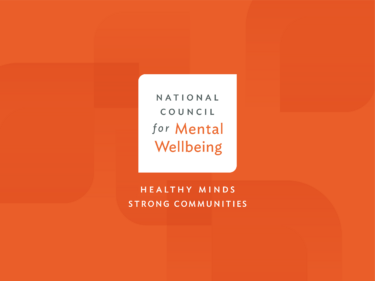The Serenity Prayer. I think everyone in our field knows the essence of it — it is an appeal for:
“serenity to accept the things I cannot change
courage to change the things I can, and
wisdom to know the difference.”
I don’t think you have to be religious or a member of AA to see the value of that framework, in life and certainly in our work in the mental health and substance use treatment field.
We all know change is hard, especially when the stakes are high. But here’s what I also know: Change is possible and necessary. Teams can work through the challenges and get to a successful finish line.
It may not be without its twists and turns, bumps and detours … but in the end, the rewards are great. And frankly, the status quo is not a long-term option. The world is changing, and long-term success requires us to change with it.
Organizational change is hard. I get it. So, why push through? Because the results can make an incredible difference. If you’re wondering whether it’s worth it, ask yourself if any of the following goals are ones you would like to achieve for your organization:
- Reduce time to care.
- Reduce extraneous data capture and documentation time.
- Reduce staff burnout and turnover.
- Reduce billing errors.
- Reduce miscommunications.
- Reduce management’s time in decision making by building leadership.
- Reduce costs.
Any one of those sounds great, right? Guess what – they are all possible. The MTM team has had the pleasure of helping thousands of organizations make such changes. When it comes to data mapping and documentation, we’ve worked with teams to reduce an average of 62% of the questions being asked of consumers as part of the initial evaluation and intake process.
Too many organizations have a wait list for initial assessments, which is really just a list of people who are not being served. That’s unacceptable — and it doesn’t have to be that way.
That’s why we work with organizations to implement Same Day Access, reducing no-shows for an initial assessment from 40% down to zero. And with Just in Time, we help teams reduce no-shows for psychiatric services from 40% to below 10%. These are just two examples of ways we can make life better – for consumers and clinical staff alike.
Staff burnout and turnover is a huge issue. When you lose a key staff member, the ripple effects are significant; it takes time to train and ramp up a new employee, and that has a financial impact on the entire organization. We know that for an agency with 100 clinical staff, turnover losses translate into $500,000 a year in lost revenue. That’s no joke.
Okay, you might be convinced of the need for change. Maybe you’ve even tried it in the past, but it didn’t work and you’re reluctant to try again. Again, I get it. So many organizations have tried and failed to implement change. Some of the common reasons why change efforts fail include:
- Looking to make adjustments instead of actual changes.
- Fear of taking a stand or a culture that avoids conflict or things that might upset staff.
- Past failed change attempts.
- Inability to see the whole problem.
- Lack of real, actionable data to create the correct change.
All of these failed efforts result in exhaustion among staff and leadership alike, making it hard to rally for another change effort. But that’s exactly why you must! And when you try to implement changes this time around, you’ll need to approach the process differently if you want to achieve a different outcome. This time, you need to embrace a change mindset.
One of the best ways to measure your change efforts is to look at how well your organization lives up to the Value of Care Equation (a.k.a., value-based care) and whether your changes are getting you closer to truly achieving it. If your organization is delivering high-quality services at appropriate costs, it should be able to measure the outcomes achieved to demonstrate that people truly are getting better.
Can your organization do that? If not, you’d better start looking at how to make that shift, because that’s where all the funders are heading. Indeed, that’s what the Certified Community Behavioral Health Clinic (CCBHC) model is based on — and today there are more than 430 CCBHCs across the country, with more hopefully coming online soon.
Look, I won’t lie to you. Change is hard. But it’s worth it. Honestly, I don’t think organizations can afford not to change. Literally: If your organization continues to operate inefficiently, it costs money, creates frustrations and delays consumers from getting the care they need.
OK, enough of my soapbox. If you’re ready to implement real and lasting change at your organization, but you’re wondering how to get things started, sign up for our webinar, “Pushing Through Organizational Change … Even When It’s Hard” on Tuesday, November 2:
Organizational change is hard, especially when the stakes are high. But it is possible, and whether we like it or not, change is necessary. The world is changing around us and success requires mental health and substance use providers to change with it. Failure to change has real consequences and…
During the webinar, I will get into the nitty-gritty details: Why change is so important, why it matters and how to overcome the challenges of making it happen. Get a head start on your learning journey – check out our website for more information on change efforts.
And of course, the MTM team and I are always here to talk with you about how we might be able to help your organization implement transformational change. It’s what gets us out of bed every day: Helping organizations improve, so they are better able to help others.
That’s it – that’s what matters.
Guest Author
President of MTM Services

